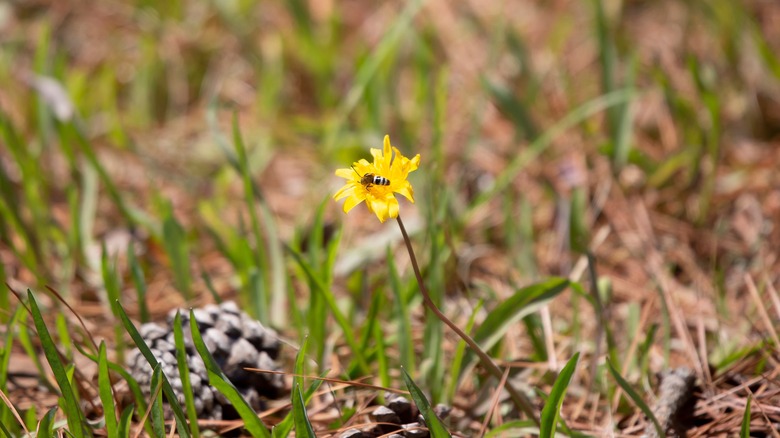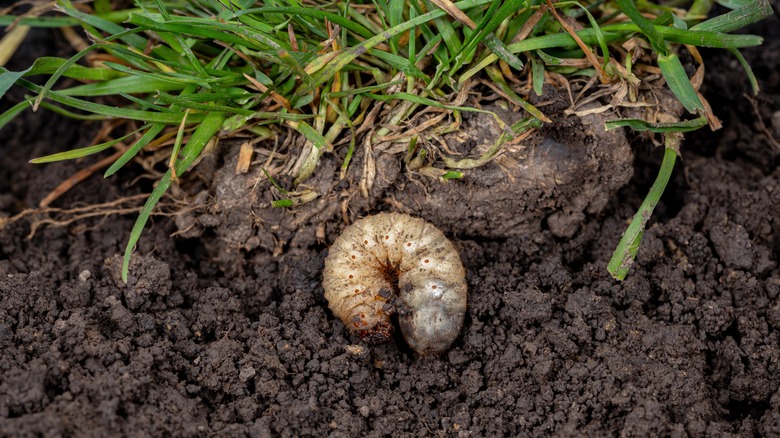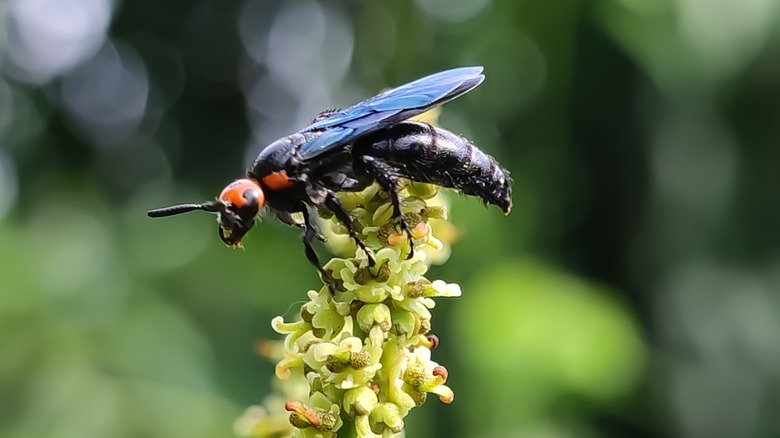Yes, There's A Type Of Wasp You'll Want To See In Your Lawn. Here's Why
If you spot wasps swarming around your lawn this season, don't panic. Take a closer look, and you may discover that these winged insects are a sign of help, not trouble. Scoliid wasps, or Scoliidae, are an effective shield against invasive larvae, also known as grubs. Grubs can do significant damage to your lawn if left unchecked, and wasps are adept at finding them in the soil and crashing their party. Believe it or not, Scoliid wasps can help bring your dying lawn back to life, and the best part is that they're quite harmless to humans.
The best way to get rid of grub worms is to detect the problem before the damage is done, but this can be difficult because the larvae are underground. Scoliid wasps will not only alert you of their presence but also intercept the larvae's path of destruction. Before you swat wasps away from your yard, it's important to know which ones you're dealing with and what you can learn from their behavior.
Scoliid wasps provide natural pest control for your lawn
Wasps are often considered a pesky problem, but the opposite is true for Scoliid wasps. These particular wasps are providers of natural pest control by feasting on grubs, or the larvae, of Japanese beetles. Grubs can wreak havoc on your lawn over time as these creatures burrow themselves into the soil and lay in wait, undetected, until the warmer months. From early summer to fall, the beetles get to work devouring your grass and lay their eggs in the soil to start the process again the following year. It can be tricky to get a grub infestation under control, but if you're lucky, you'll have the help of Scoliid wasps to eradicate these predatory beetles from your lawn.
Adult Scoliid wasps don't consume the larvae themselves. They use them as a food source for their young. A female wasp detects a grub in the soil and incapacitates it with a sting. Then, she attaches her egg to the grub, and when the egg hatches, the wasp's offspring consumes the grub. Through this process, the wasps propagate their species and wipe out invasive pests in one fell swoop. Nature is fascinating, isn't it?
How to detect Scoliid wasps and help them thrive
Scoliid wasps have a distinct appearance and behavior, making them easy to identify. Over 500 species of these wasps exist worldwide, including southern and sub-tropical areas of North America, and they vary slightly in appearance. What most of them have in common are their relatively large size, hairy underside, and a blue or black coloration with a metallic shine. Some Scoliid wasps have yellow stripes and spots. Their backs are also bent into a curved shape, which gives them their name, "Scolia," as in scoliosis.
Another positive aspect of these wasps is that they are not aggressive to humans. They often keep to themselves and rarely sting, as long as you don't step on them in bare feet. They save their stingers for the larvae in your soil. To help these flying insects banish pesky grubs from your lawn, allow them to feed on the nectar and pollen of the flowers in your garden. This will give them the necessary fuel to fulfill their duty and tackle the pesky problem taking root in your soil.


